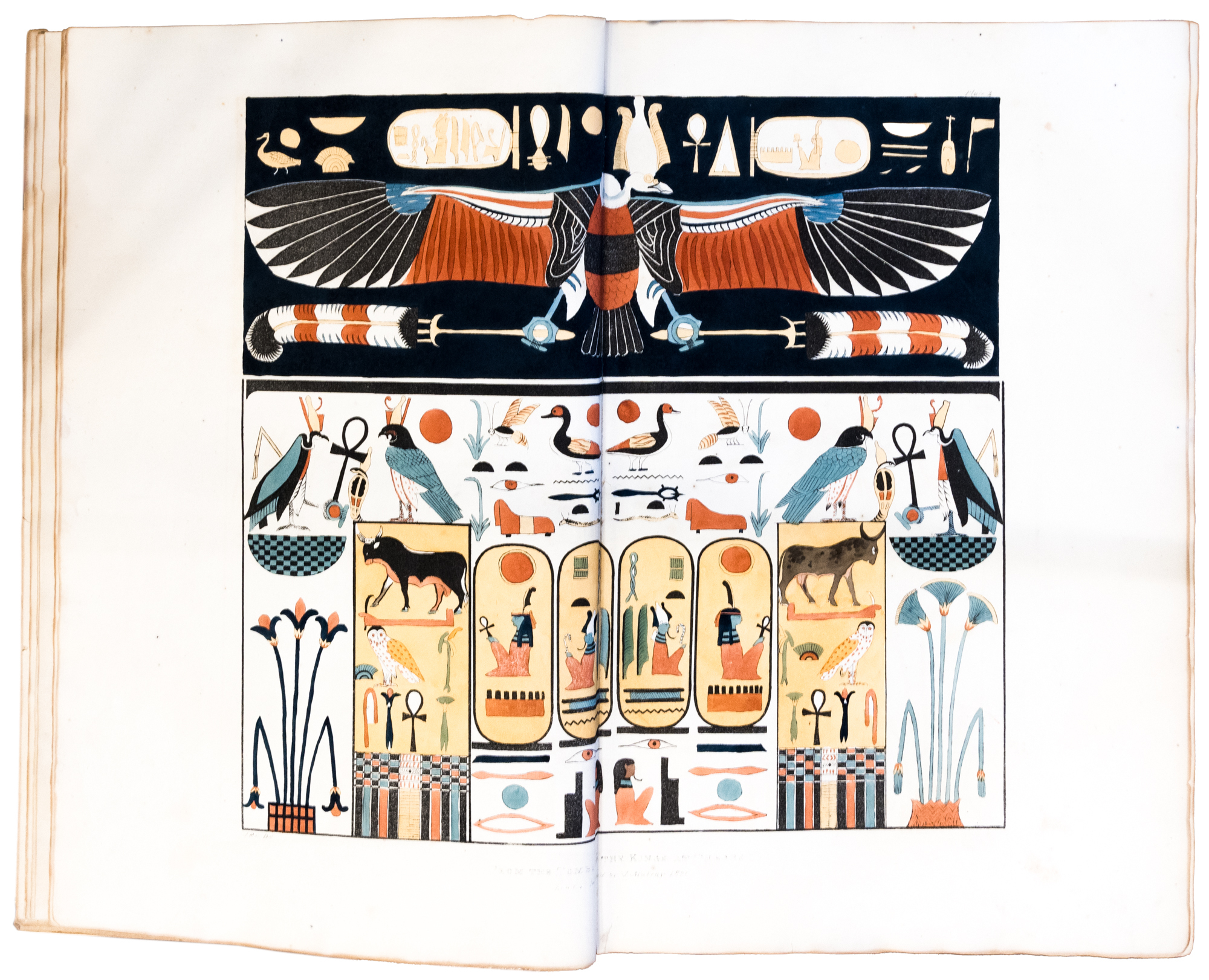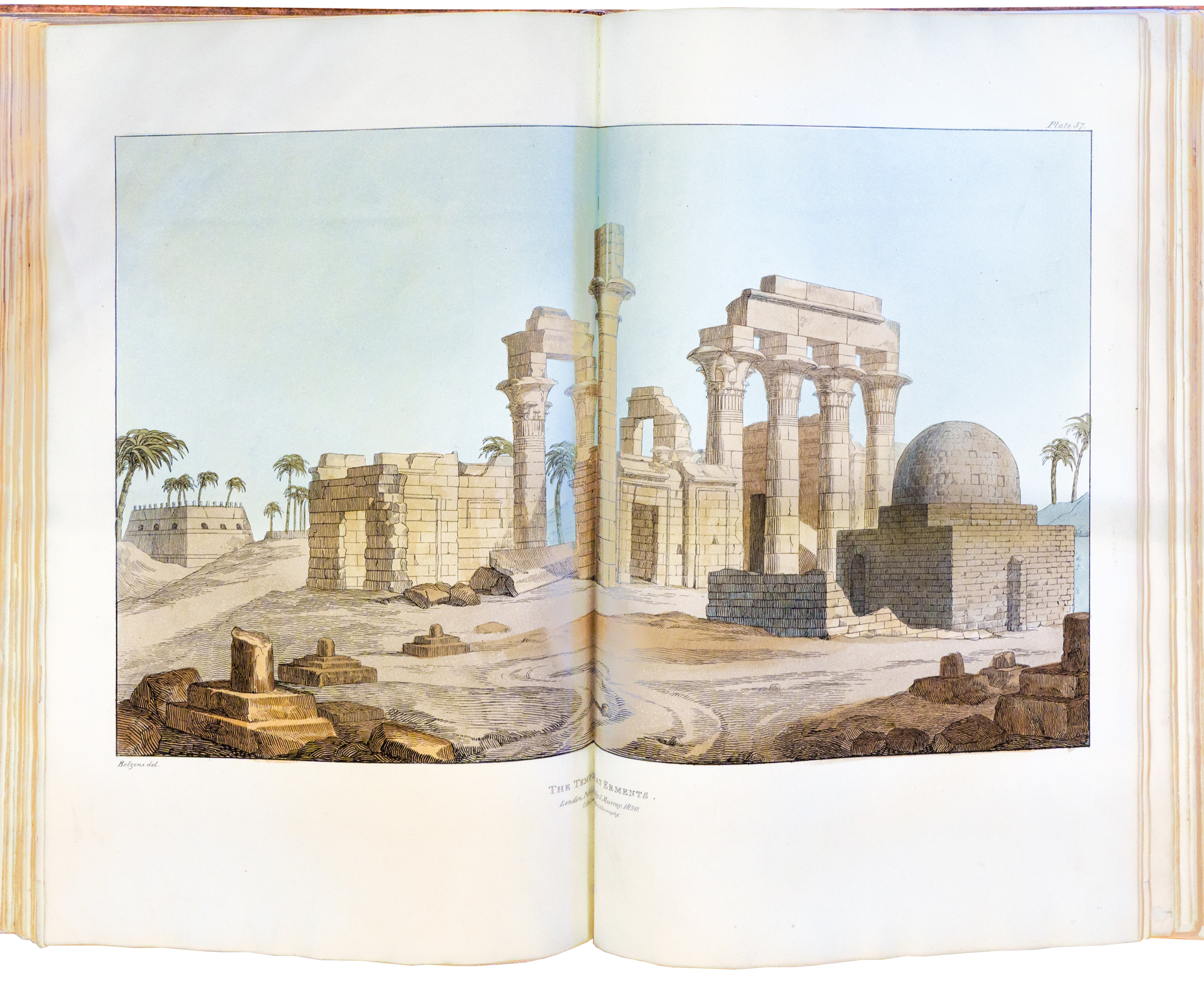

This book belongs to the earliest attempts to document Ancient Egypt for a Western audience. Experts and the general public have relished it as a true treasure trove ever since it was first published in 1822. Belzoni’s incisive observations continue to be a rich source for archaeologists and ethnologists faithfully documenting sites and antiquities as they suddenly became accessible to the early 19th century discoverers from Europe and include sites not accessible to others.


B. Belzoni (1778-1823) was one of the most colourful characters among the early European explorers of Ancient Egypt. His contributions to the Egyptian collection of the British Museum were foundational. His engineering skills allowed him to move colossal antiquities sought after by the British Museum with amazing efficiency. Belzoni was more of a collector rather than an archaeologist in our modern understanding of the word; his crude methods included the use of sledgehammers, chisels and even gunpowder and he left his graffiti in the most inappropriate places but so did everybody else at that time. Belzoni’s discoveries were ground-breaking nevertheless and helped lay the foundations of modern Middle Eastern Archaeology. At least as important as his discoveries are his publication culminating in his:
“NARRATIVE OF THE OPERATIONS AND RECENT DISCOVERIES WITHIN THE PYRAMIDS, TEMPLES, TOMBS, AND EXCAVATIONS, EGYPT AND NUBIA, AND OF A JOURNEY TO THE COAST OF THE RED SEA IN SEARCH OF THE ANCIENT BERENICE AND ANOTHER TO THE OASIS OF JUPITER AMMON”
It contained the “Plates” with paintings and drawings added to his memoirs. They continue to be rich sources for archaeologists and ethnologists faithfully documenting sites and antiquities at the early 19th century and the difficulties early travellers had to overcome. Most famous are Belzoni’s watercolour paintings copying what are arguably the finest wall paintings in the valley of the kings. They were found in the tomb of Pharaoh Sety I. which was rediscovered by Belzoni and is referred to even today as “Belzoni’s tomb”. The tomb’s ceilings were decorated with paintings of the mythical Egyptian night sky and the constellations the ancient Egyptians saw in the stars above and meticulously copied by Belzoni in water colours. Equally famous is Belzoni’s painting of his successful attempt to move the carefully crated colossal torso of a granite statue of Pharaoh Ramses II (the famous younger Memnon or King Ozymandias of English poetry) rolling it over tree trunks towards the banks of the Nile from where it was shipped to the British Museum.
Belzoni became an anglophile after finding refuge in Britain escaping political turmoil in his homeland Italy during the Napoleonic wars. Here he found and married his formidable English wife Sarah who accompanied her husband everywhere and whose thoughtful observations and insights into the lives of women in Egyptian society make a fascinating read even today. Fortunately, Belzoni was judicious enough to include her writings as an addendum to his own “Narrative”.
The paintings and drawings of G. Belzoni and his assistant Allesandro Ricci though beautiful and appealing may not quite rival the almost perfect illustrations of the voluminous and comprehensive “Déscription de l’Egypte” by Napoleon’s savants or Lepsius’s Prussian expedition’s “Denkmäler aus Ägypten und Äthiopien” published just before and after Belzoni; but Belzoni’s incisive observations continue to be a rich source for archaeologists and ethnologists faithfully documenting sites and antiquities as they suddenly became accessible to the early 19th century discoverers from Europe and include sites not accessible to others.
rgsp 962 B454 d cabinet 2 shelf 11
© The Royal Geographical Society of South Australia